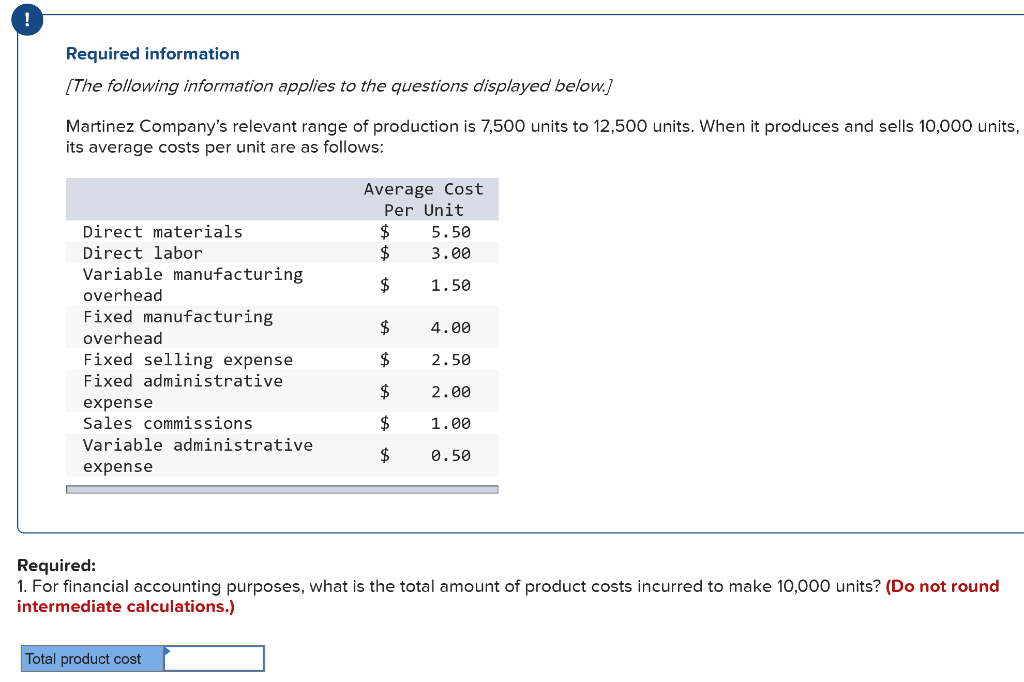
Utilize technologies like supply chain analytics and forecasting tools to make informed decisions and improve overall efficiency. Regularly reviewing supplier contracts and negotiating better terms can significantly impact your manufacturing costs. Suppliers often offer discounts for bulk purchases or extended contracts, which can reduce your material costs.
Understanding Fixed Costs
- You count the beverage units you produced over the same period on the same day.
- Fixed costs refer to the business expenses that remain constant regardless of the level of production or sales.
- This will be the cost of rent on the factory, heating, phone and other utilities, the salary of managers, packing and shipping clerks, administrative staff and so forth.
- Grasping the fundamentals of cost-classification is an essential part of analysis, budgeting and forecasting and making informed business decisions.
- At Finance Strategists, we partner with financial experts to ensure the accuracy of our financial content.
Once you identify the indirect costs, get detailed expense data for each of these overhead cost categories for a specific period, such as a month or a year. You can track expenses by looking at your invoices, receipts, and records of all expenditures related to manufacturing overhead. Variable costs fixed manufacturing costs move in direct proportion to the volume of goods produced. As production increases, variable costs rise; as production decreases, these costs fall. Variable costs also vary by industry, so it’s important for anyone analyzing companies to make comparisons between those that are in the same industry.
Variable Costs – Variable and Fixed Costs
This blog will be your go-to resource, from basic components like direct materials, labor, and overhead to more advanced topics like activity-based costing and cost variance analysis. Since absorption costing includes allocating fixed manufacturing overhead to the product cost, it is not useful for product decision-making. Absorption costing provides a poor valuation of the actual cost of manufacturing a product.
What Role Does Technology Play in Manufacturing Cost Analysis? – FAQs
You can use risk management, task management and resource management features to control production and keep to your manufacturing schedule. Production capacity is a critical concept for business managers to stay focused on. You need to plan your production capacity well ahead of time because you need plenty of lead-time to assemble the right people, equipment, land, and buildings. When you have the necessary production capacity in place, you want to make sure that you’re making optimal use of that capacity.
They’re also tied to revenue—since the more you sell, the more revenue you have coming in. So, if you sell tote bags, and your sales revenue doubles during the holidays, you’ll also see your variable costs—including the cost of wholesale tote bags—increase. Operating leverage refers to the percentage of a company’s total cost structure that consists of fixed rather than variable costs. Direct labor costs include the wages and benefits paid to employees directly involved in the production process of goods or products.
On the other hand, variable costs fluctuate in line with the level of production. Manufacturing cost analysis is breaking down and studying the various production costs. It encompasses direct materials, direct labor, and manufacturing overhead. The objective is to understand the cost structure, identify inefficiencies, and find opportunities for cost optimization. Manufacturing overhead is often the most complex component of manufacturing costs to understand and manage.
As employees use Clockify to clock in and out, employers gain insights into the total number of hours each employee worked on each production line. The company purchases $1,000 worth of new materials to make product X. While appreciating your time for reading, we hope the insights and strategies discussed will serve as valuable resources for your business endeavors. Identifying outliers can help reallocate resources and make strategic decisions like product discontinuation or redesign. The material costs are higher than budgeted, indicating a need for supplier negotiation or bulk purchasing to optimize these costs. For the past 52 years, Harold Averkamp (CPA, MBA) hasworked as an accounting supervisor, manager, consultant, university instructor, and innovator in teaching accounting online.

This process encompasses a range of steps, including material procurement, production, assembly, quality control, and packaging. All sunk costs are fixed costs in financial accounting, but not all fixed costs are considered to be sunk. The defining characteristic of sunk costs is that they cannot be recovered. The fixed cost ratio is a simple ratio that divides fixed costs by net sales. It’s used to determine the proportion of fixed costs involved in production.
In other words, each apron must absorb a small portion of the fixed manufacturing overhead costs. At DenimWorks, the fixed manufacturing overhead is assigned to the good output by multiplying the standard rate by the standard hours of direct labor in each apron. Hopefully, by the end of the year there will be enough good aprons produced to absorb all of the fixed manufacturing overhead costs. Cost is something that can be classified in several ways, depending on its nature.
For example, raw materials and direct labor costs are variable costs because they increase as production increases and decrease as production decreases. In contrast, fixed costs such as rent and insurance remain constant regardless of production levels. Absorption costing can skew a company’s profit level due to the fact that all fixed costs are not subtracted from revenue unless the products are sold. By allocating fixed costs into the cost of producing a product, the costs can be hidden from a company’s income statement in inventory. Hence, absorption costing can be used as an accounting trick to temporarily increase a company’s profitability by moving fixed manufacturing overhead costs from the income statement to the balance sheet. Manufacturing overhead is any costs related to the manufacturing of a product that isn’t direct materials costs or labor costs.



